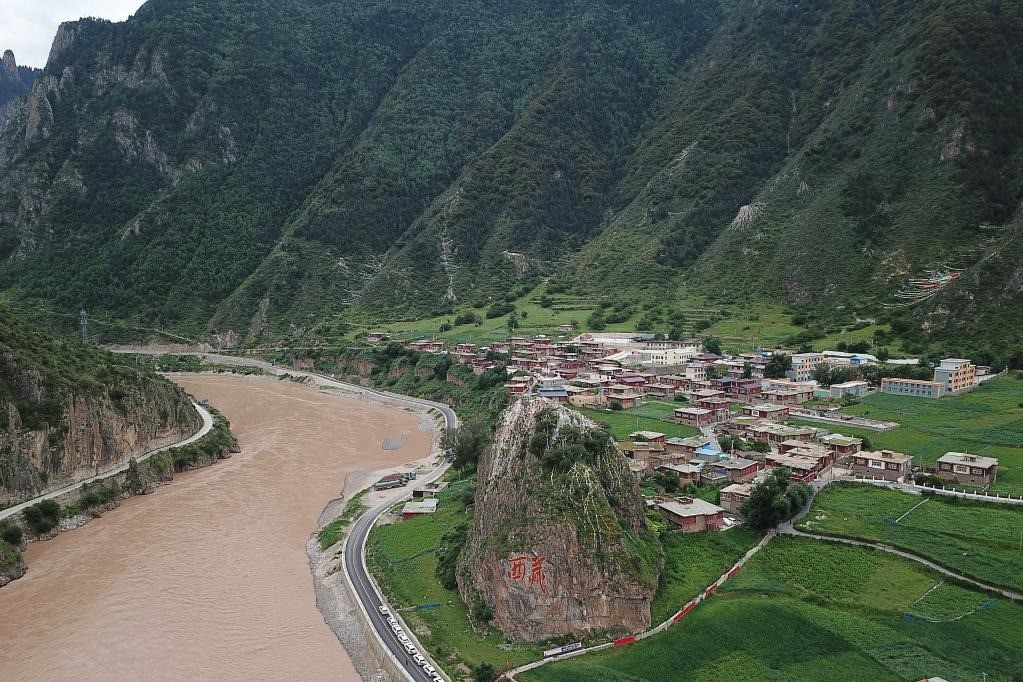By Dechen Palmo, Research Fellow, TPI
China’s ambitious hydropower development on the Drichu (upper Yangtze River) in Tibet represents a strategic initiative with far-reaching implications for the environment, local communities, and regional geopolitics. This development is part of a broader plan to build 13 major dams along the river, establishing the world’s largest clean energy corridor.
Strategic Motivations
China’s intensive hydropower exploration on the Yangtze River is driven by several key factors. First, it aligns with China’s climate commitments to peak CO2 emissions before 2030 and achieve carbon neutrality before 2060. With an existing 390 GW of installed hydropower capacity, China aims to reach 480 GW by 2030. Second, the Yangtze River Economic Belt generates more than 40% of China’s GDP, making energy security in this region critical for national development. Third, dams serve as flood control mechanisms in a region increasingly affected by climate change-induced extreme weather events.
The Kamtok Dam Controversy
The 1.1 GW Kamtok (Gangtuo) Dam, currently under construction in Dege County, has sparked unprecedented protests. Local opposition intensified when residents discovered the project would submerge 12 villages and several historic monasteries, including the 700-year-old Wontoe Monastery with its irreplaceable Buddhist murals. Despite government assurances that construction would proceed only with 80% resident consent, the project moved forward without meaningful consultation.
Protests in February 2024 led to a severe crackdown, with reports indicating over 1,000 Tibetans were detained. The Chinese government’s heavy-handed response drew international attention, culminating in 13 UN Special Rapporteurs expressing concerns over human rights violations related to the project.
The Cascade of 13 Dams
The comprehensive “one reservoir and thirteen levels” development plan encompasses dams including Xirong, Shaila, Guotong, Kamtok, Yanbi, Boluo, Yebatan, Lawa, Batang, Suwalong, Changbo, Xulong, and Benzilan. These projects are being developed primarily by Huadian Jinsha River Upstream Hydropower Development Co. and will collectively generate over 10 million kilowatts of power.
Notable among these is the 2.24 GW Yebatan Dam, the largest in the series, featuring a 217-meter-high concrete double-curvature arch dam. Also significant is the Lawa Dam, which will become the world’s second-highest concrete face rockfill dam at 239 meters. The Suwalong Dam, completed in 2021, was the first major hydropower project in the upper reaches of the Jinsha River. Particularly concerning is the Boluo Hydropower Station, located a few kilometers from Polo Township, which experienced two consecutive landslides in 2018, resulting in severe flooding and submerging nearby areas. Despite these risks, the dam is expected to become operational this year, raising serious safety and environmental concerns.
Environmental and Social Impacts
The environmental consequences of this massive hydropower development are severe. The upper Yangtze River supports unique biodiversity, including endangered species. Dams disrupt natural river flow, damage breeding grounds, alter flood-recession cycles, and trap sediment crucial for downstream ecosystems. Recent scientific studies confirm that droughts in the basin have become more frequent and prolonged during the dry season, partly due to altered river flows.
Socially, these dams will displace thousands of Tibetans whose livelihoods and cultural identity are deeply connected to the river. According to the International Campaign for Tibet, the Kamtok Dam alone will impact approximately 14,554 people. Resettlement often leads to social conflict, cultural disruption, and loss of traditional livelihoods. Many dams are also located in earthquake-prone areas, raising safety concerns for surrounding communities.
PS: This is a brief overview of a more detailed paper by Dechen Palmo. To access the full paper, click on the link – it will be added shortly.
*Dechen Palmo is a research fellow at the Tibet Policy Institute. Views expressed here do not necessarily reflect those of the Tibet Policy Institute.

